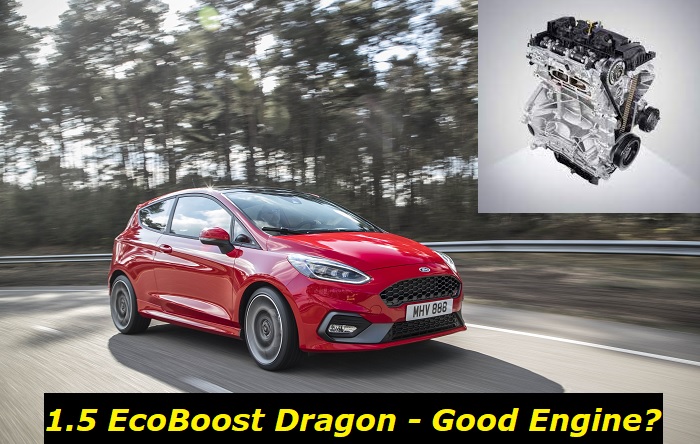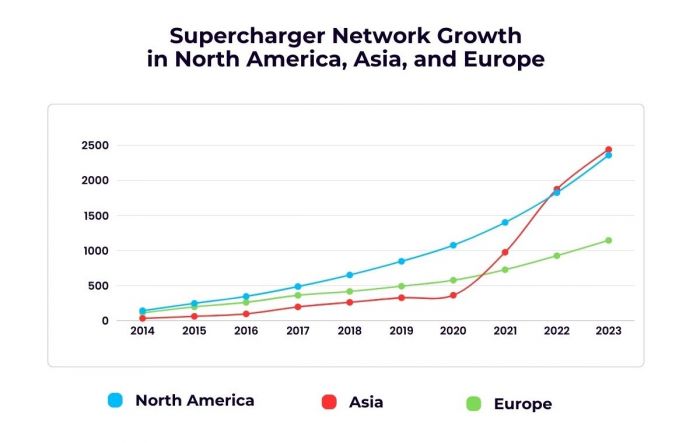Before, 1.5L engines were so overlooked when they came out because of their very small profile. However, they eventually won the hearts of consumers when they proved their mettle thanks to Ford.
Coming from Ford's EcoBoost line of engines is the 1.5L Dragon three-cylinder engine. Despite its modest stature, the engine offers a decent amount of output to power a crossover. It also features a technology that promotes optimum efficiency and a high level of reliability. Behind all the glamour about this power unit are some inconveniences shared by a number of owners though. So, in this article, we will explore all the good and the bad sides of this product.

Key features and my opinion about the engine
- Production years:2017-now
- Average lifespan of 1.5L 3-cylinder EcoBoost:150,000-190,000 miles
- Fuel supply type:direct injection
- Power range:150-200 hp
- Fuel efficiency:good
- Engine block material:aluminum
- Engine reliability score:medium
- The most common problems:cylinder deactivation mode problems, vibrations, various electrical issues, turbocharger problems.
How Long will the Ford 1.5 EcoBoost Dragon Engine Last?
The titanic engines of Ford are known to rake up plenty of mileage before even requiring an overhaul or replacement. An average unit is estimated to have an engine life of over 200,000 miles with proper maintenance. The consensus on the 1.5 EcoBoost Dragon engine is a lot lower than those figures though. Mechanics and automotive analysts peg the durability of this product at a conservative 80,000 to 100,000 miles before needing major repairs. More generous valuations give it more or less 150,000 miles.
We believe that more mileage can be achieved with this engine though if these tips to prolong your engine life are followed:
1. Keep your engine clean both inside and out.
Regular cleaning will help to prevent the buildup of dirt, grime, and other deposits that can damage engine components.
2. Inspect your engine regularly.
Be on the lookout for any signs of wear or damage, and have any problems fixed as soon as possible.
3. Change your oil regularly.
This is one of the most important things you can do to prolong the life of your engine. Be sure to use the recommended oil type and weight for your particular vehicle.
4. Use quality fuel.
Cheap gasoline can contain impurities that can damage your engine over time. Stick with a reputable brand to help minimize these risks.
5. Avoid extended idling periods.
If you're going to be stopped for more than a minute or two, it's best to shut off your engine. This will help to prevent unnecessary wear and tear.
6. Drive carefully.
Avoiding hard acceleration, sudden braking, and other aggressive driving habits can help to extend the life of your engine.
7. Get regular tune-ups.
Having your engine tuned up according to the manufacturer's recommendations can help to keep it running at peak efficiency, which can in turn prolong its overall lifespan.
8. Take care of any maintenance issues right away.
Don't procrastinate when it comes to dealing with things like leaks, worn belts or hoses, etc. The sooner you take care of these problems, the less likely they are to cause serious damage to your engine.
9. Keep an eye on your coolant level.
If it gets too low, it can cause your engine to overheat - which can lead to serious damage.
10. Store your vehicle properly when not in use.
If you're not going to be driving your car for an extended period (such as over the winter months), make sure to store it in a sheltered, dry location to help prevent corrosion and other issues.
What are the Common Problems of the Ford 1.5 EcoBoost Dragon Engine?
As with any other type of engine, the Ford 1.5 EcoBoost Dragon has its share of issues. The causes of such problems range from design flaws to the premature wear of its components.
In this section, we will take a look at the common problems experienced by Ford 1.5 EcoBoost Dragon engine vehicles based on owner reviews and reports.
1. Sluggish Performance While EcoBoost is Active
Ford EcoBoost engines come with a cylinder deactivation function as a standard fit, which allows them to operate on fewer cylinders when full power is not needed. This helps improve fuel efficiency and reduces emissions. When the cylinder deactivation operation is active, the engine will run smoother and quieter than when all cylinders are firing.
On paper, the technology is great for engines with at least four cylinders, but this can have a major drawback with a three-cylinder engine. As you can imagine, the deactivation of even a single cylinder in a three-cylinder unit will only leave it with two. It may cut your fuel consumption significantly but only having two-cylinder working actively will surely bring about sluggish performance in certain instances.
Unfortunately, there's no way to go around this issue as your engine is specially designed with such a feature. If you find this particular tech to be such a hassle on your part, then stay away from the models equipped with it.
2. High Risk of Carbon Build-Up
The carbon build-up issue in the Ford 1.5 EcoBoost Dragon three-cylinder engine is a well-documented problem. The cause of the issue is a design flaw in the cylinder head, which allows oil and other fluids to seep into the combustion chamber. This causes the formation of carbon deposits on the valves and piston rings, eventually leading to serious engine damage.
There are several ways to clean the carbon deposits from your engine, but the most effective method is to employ a professional engine cleaning service. They will remove all of the carbon deposits from your engine, and help prevent these impurities from reforming in the future.
If you want to try a DIY solution, you can use an aerosolized cleaner or a carbon removal kit. These kits usually come with a set of instructions, and you should follow them carefully to avoid damaging your engine.
3. Fuel Pump-Related Problems
Fuel pump problems can be very frustrating and dangerous at the same time. These can lead to your car stalling or even catching fire. Fuel pumps are responsible for delivering fuel from the tank to the engine. If it's not working properly, it can cause several issues, including stalling, hard starts, poor engine performance, misfiring, and the "Check Engine" light turning on.
There are a number of factors that can cause fuel pump problems in the Ford 1.5 EcoBoost Dragon three-cylinder engine. Some of the most common causes include dirty or old fuel, clogged fuel filter, faulty fuel pressure regulator, and electrical issues.
If you suspect that your car is having fuel pump problems, the first thing you should do is check the fuel level. If the fuel level is low, it could be causing the pump to work harder than necessary, which could lead to failure. You should also check the fuel quality. If it looks dirty or contains water, it could be clogging the pump or causing it to fail.
If you suspect that your fuel pump is failing, you can try a few DIY solutions to see if they fix the problem. One solution is to clean the fuel tank. This will remove any dirt or debris that may be clogging the pump. Another solution is to replace the fuel filter. This will help to ensure that only clean fuel is reaching the pump. Finally, you can check the pump's electrical connections and ensure they are tight and free of corrosion.
If you try these DIY solutions and the problem persists, it's best to take your car to a mechanic or dealership for further diagnosis and repair.
Ford 1.5 EcoBoost Dragon Engine Specs
The Ford 1.5 EcoBoost Dragon engine is highlighted by its inline-three-cylinder design matched to a dual overhead cam (DOHC) with variable camshaft timing (VCT) valve configuration, belt camshaft drive, and turbocharged aspiration. It uses a cast aluminum head and block making it lightweight at only 200 lbs. and durable too.
In addition, the unit features a transverse orientation to provide better fuel economy as compared to longitudinal ones. Likewise, this makes it more ideal for front-wheel-drive compact vehicles.
The 1.5 EcoBoost Dragon has 1,497 cc displacement with a bore measuring 79 mm, a stroke of 76.4 mm, and a high compression ratio of 10.0:1. The numbers mean that the engine has optimized energy delivery due to its high thermal efficiency which translates to a very effective combustion process.
The power rating of the engine is dependent on its vehicle application. Based on the models that are primarily designed to go with it such as the Ford Escape, Ford Fiesta ST, and Ford Focus it can be configured to deliver between 150 to 197 hp at 6,000 rpm and 177 to 214 lb-ft of torque between 1,600 and 4,000 rpm. The engine is usually partnered with either a six-speed manual or an eight-speed automatic.
In its most ideal configuration, the three-cylinder engine almost performs as its inline-four counterpart, and it's capable of covering 0 to 60 mph in an estimated time of around 8.4 seconds.
As mentioned earlier, the engine possesses a cylinder deactivation function as with other EcoBoost engines in order to enhance fuel economy under certain conditions.
Is the Ford 1.5 EcoBoost Dragon the Right Engine for You?
The Ford 1.5 EcoBoost Dragon three-cylinder offers pretty decent performance for an engine of its size. It is also highlighted by its fuel economy, thanks to its EcoBoost tech. However, it comes with a specific set of problems brought about by the design of the engine itself and prolonged use or abuse on the part of the owner.
Its life expectancy is low compared to the other engines of its maker as well. So, if you find the issues that we featured here troubling on your part, better stick with vehicles possessing Ford's larger power units.
About the authors
The CarAraC research team is composed of seasoned auto mechanics and automotive industry professionals, including individuals with advanced degrees and certifications in their field. Our team members boast prestigious credentials, reflecting their extensive knowledge and skills. These qualifications include: IMI: Institute of the Motor Industry, ASE-Certified Master Automobile Technicians; Coventry University, Graduate of MA in Automotive Journalism; Politecnico di Torino, Italy, MS Automotive Engineering; Ss. Cyril and Methodius University in Skopje, Mechanical University in Skopje; TOC Automotive College; DHA Suffa University, Department of Mechanical Engineering






Add comment